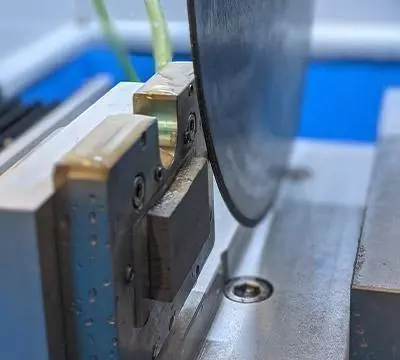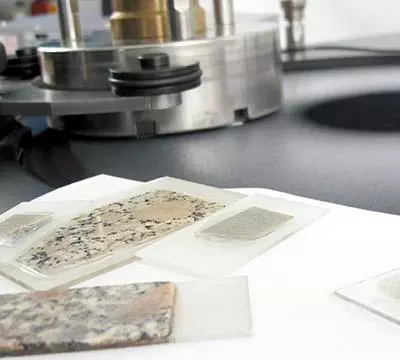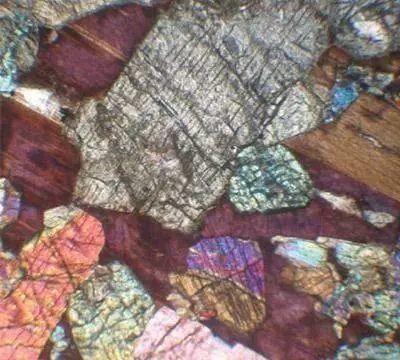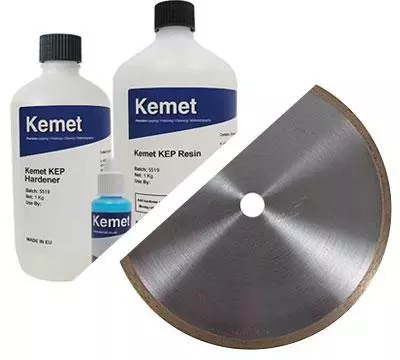Thin Section Preparation for Mineral & Petroleum Exploration
The role of exploration is to provide the information needed to find the best possible opportunities presented in the choice of areas. Coring provides the best means of obtaining high-quality samples for the direct measurement of rock and reservoir properties. Most core samples are obtained by drilling with special coring drills into the area of interest, such as sediment or rock. Core samples are then used to perform Core Analysis to obtain detailed petrophysical data.
The core samples can also be prepared as thin sections in order to examine the rock samples obtained from drilling and to study the rock properties and their relationship with oil and gas reservoirs. The thin sections allow geologists to study the pore structures, grain size, and orientation of the rocks, which can provide information about the permeability and porosity of the reservoir rocks, as well as the potential for oil and gas accumulation.
A thin sample of the rock is cut with a diamond saw and ground optically flat. It is then mounted onto a glass slide and then ground smooth using progressively finer abrasive grit until the sample is only 30 μm thick. The thin sections can then be placed between two polarizing filters set at right angles to each other, the optical properties of the minerals in the thin section alter the color and intensity of the light as seen by the viewer.
The interference patterns produced by the thin sections on the Michel-Lévy Interference Color Chart are assigned a specific color, based on the wavelength of light that is being amplified or canceled out. For example, minerals with high refractive indices will produce bright, colorful patterns, while minerals with low refractive indices will produce dark patterns.
By comparing the interference patterns, mineralogists can identify the mineral and determine its optical properties. This information is important for understanding the composition, texture, and formation of rocks and minerals, and can be used to make informed decisions about mineral exploration and extraction.

Recommended equipment for Thin Section Preparation
The ‘KemTech Geo’ is a precision thin section cutting and grinding machine, for quick and precise material removal, the ‘KemTech Geo’ is able to perform both the cutting and grinding stages on one machine. On the cutting module, the slide-mounted specimen is fixed onto a holder with a vacuum and sectioned up to a thickness of 0.5mm. Water cooling during cutting avoids deformation and heat degradation on the samples. On the grinding module, the grind position can be micron adjusted, with an encoder displaying the grinding position on the HMI to 0.001mm resolution, ensuring highest precision.
The ‘KemTech III Thin Section Lapping Machine’ is capable of accurately lapping and polishing thin sections mounted on glass slides down to 30 microns. Metered dosing of diamond and/or conventional abrasives is applied to the lapping plate using the integrated peristaltic dispenser. The ‘Lift Off Disc’ system allows quick transitions between the lapping and polishing stages.
The Kemet range of Geological sample preparation equipment can cater for high and/or low-volume production. Preparing thin sections, ready for analysing, requires highly specialized equipment and skills to produce these specimens to very thin thicknesses, generally around 30 microns for observations with Polarizing Microscopes.
In conclusion, thin sections are an important tool in the exploration of minerals and petroleum, as they provide valuable information about the properties and characteristics of rocks and minerals, which can help geologists to make informed decisions about mineral and petroleum exploration.






